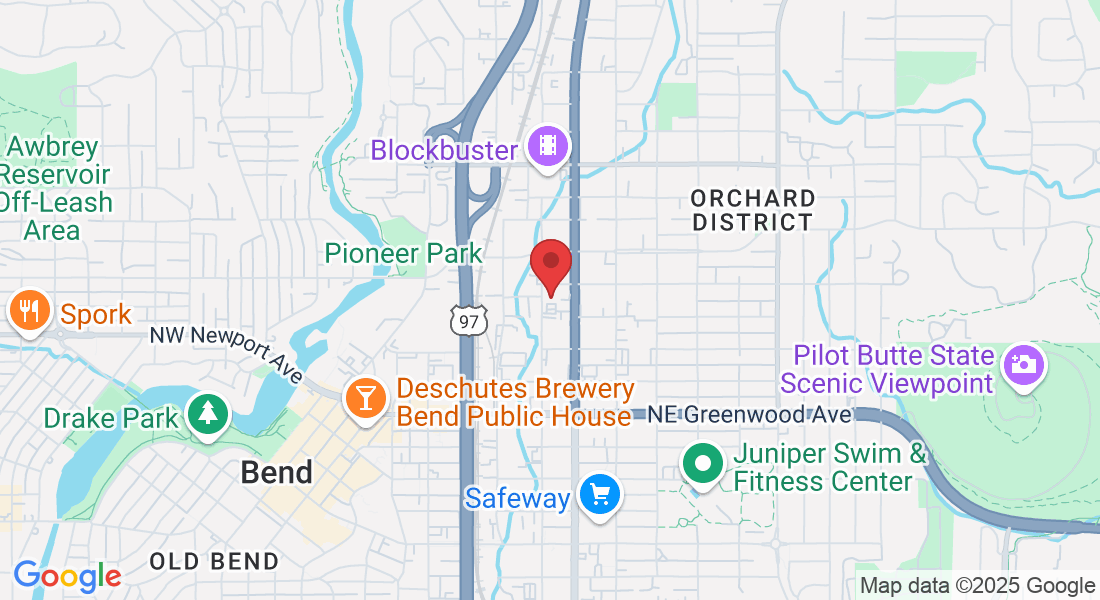Your Source for All Things Physical Therapy in Bend Oregon
The PhysioBLOG
Here, we share informative articles and insights that aim to help you achieve your full potential through our fitness-focused approach to rehabilitation. Our team is dedicated to providing you with valuable tips and techniques that can help you overcome any obstacle, whether you're recovering from an injury, surgery, or striving to build strength and wellness for life.
Stay up-to-date with our latest posts & empower yourself with elegantly simple techniques for optimal health & wellness.

Enhance Your Rocking Climbing Experience with Physical Therapy in Bend
Please Note: The information provided on our website is intended for general education and is not a substitute for professional medical advice. Each individual's situation and body are different. Therefore, what may work for one person may not work for another. We care about your well-being and advise you to reach out to us to discuss your specific needs before implementing any advice from our website. If you’d like to explore this more or would like to schedule a time with a physical therapist in Bend Oregon, contact us at PhysioFITBend.com
Introduction
The growing popularity of rock climbing has led to increased injury risks, making it crucial to understand potential dangers and the role of physical therapy in mitigating them. Physical therapy enhances climbing performance and safety by focusing on strength, flexibility, and injury prevention. It addresses climbers' specific muscle imbalances, weaknesses, and flexibility limitations, creating customized treatment plans. These plans include exercises to strengthen the core and upper body, improve balance, and prevent common injuries. Beyond physical benefits, physical therapy also aids in developing mental resilience, crucial for climbing. It provides guidance on proper routines and educates climbers about potential risks, helping them perform at their best.
Shoulder Injuries in Rock Climbing
Shoulder Impingement: Causes, Treatment, and Prevention
Shoulder impingement is a common issue in rock climbers, characterized by the compression of tendons and muscles in the shoulder joint. This condition can be caused by repetitive overhead movements and poor posture, among other factors. The treatment typically involves rest, physical therapy exercises to strengthen the shoulder muscles, and in some cases, surgery. To prevent shoulder impingement, climbers should focus on maintaining proper technique and form while climbing, as well as incorporating exercises to improve shoulder stability and flexibility. By taking proactive measures to prevent shoulder impingement, climbers can enjoy a safer and more fulfilling rock climbing experience.
Shoulder Labral Damage: Types of Injuries and Their Treatment Options
Shoulder labral damage is a common injury in rock climbing, with various types of injuries and treatment options. These injuries typically occur due to overuse or trauma, leading to tears or fraying of the shoulder labrum. Treatment options range from conservative methods such as rest, physical therapy, and anti-inflammatory medications, to more invasive surgical interventions like arthroscopy for labral repair. It is important for climbers to be aware of these types of injuries and consult with a health professional for an accurate diagnosis and appropriate treatment plan.
In order to prevent shoulder labral damage, climbers should focus on strengthening the muscles surrounding the shoulder joint and maintaining proper technique during climbs. This includes engaging in exercises that target the rotator cuff muscles and practicing proper body alignment and movement patterns. Additionally, climbers should ensure they have adequate rest periods between climbing sessions to allow for recovery and avoid overuse injuries.
Knee Injuries in Rock Climbing
When it comes to rock climbing, knee injuries can be a common occurrence that can hinder your progress and enjoyment. Understanding the specific types of knee injuries that climbers frequently face is crucial in preventing and treating them effectively.
Lateral and Posterior Knee Pain: Common Injuries and Their Causes
Rock climbers often face lateral and posterior knee pain due to overuse, incorrect technique, or muscle imbalances, leading to conditions like iliotibial band syndrome or posterior knee impingement. To prevent such injuries, climbers should focus on strengthening exercises for knee muscles, proper climbing techniques, and adequate rest.
Physical therapy is crucial in rehabilitating and preventing these knee pains. It helps address muscle imbalances, strengthen weak areas, and correct faulty movements. A recent study titled, "Prevention and Rehabilitation Strategies for Rock Climbing Injuries," qunderscores the importance of physical therapy in managing these issues. Therefore, understanding these common injuries and implementing injury prevention strategies with a physical therapist's guidance is key to improving climbing performance and reducing future knee injuries. Remember, a flexible hip leads to a happy hip and a grateful knee in rock climbing.
Importance of hip flexibility and stability in knee injury prevention
Having adequate hip flexibility and stability is crucial for preventing knee injuries in rock climbing. The proper range of motion in the hips allows climbers to move fluidly and efficiently, reducing the strain on their knees. Maintaining hip stability helps to stabilize the knee joint during dynamic movements, minimizing the risk of injury.
Poor hip flexibility and stability can lead to compensatory movements and overloading of the knee joints, increasing the likelihood of knee injuries. Therefore, focusing on improving hip flexibility and stability through targeted exercises and stretching routines is essential for preventing knee injuries in rock climbers.
Additionally, by prioritizing hip flexibility and stability, climbers can also enhance their overall performance. Improved hip mobility allows for greater reach and better body positioning on the wall, enabling climbers to execute moves more effectively. Furthermore, increased hip stability provides a solid foundation for upper body engagement while climbing, allowing climbers to generate more power and control during challenging moves.
Long-Term Injuries and Injury Prevention
When it comes to long-term injuries in rock climbing, understanding their impact and taking steps for prevention and rehabilitation are key. Chronic injuries can significantly affect a climber's performance and hinder their overall experience.
Understanding Chronic Injuries and Their Impact on Climbing
Chronic injuries in rock climbing are vital to understand due to their significant impact on the sport. These long-term injuries can affect climbers' performance, endurance, and overall climbing ability. It is crucial for climbers to be aware of the potential risks and take steps to prevent or manage chronic injuries effectively.
To comprehend the implications of chronic injuries in rock climbing, it is essential to recognize that these injuries can lead to decreased strength, flexibility, and mobility. Over time, repetitive stress on certain joints, tendons, and muscles can result in inflammation, pain, and reduced range of motion. This not only hampers a climber's ability to perform at their best but also poses a risk for further injury.
One aspect that contributes to chronic injuries in climbing is improper technique or movement patterns. Climbers who consistently use poor form or ignore proper body mechanics put themselves at a higher risk of developing chronic overuse injuries. Understanding the biomechanics involved in climbing movements and ensuring correct execution can help minimize the strain on vulnerable areas.
Additionally, climbers should prioritize regular rest and recovery periods as part of their training regimen. Adequate rest allows the body time to repair damaged tissues and strengthen muscles, reducing the likelihood of chronic injury development. Incorporating cross-training activities that improve overall strength and flexibility can also help mitigate injury risks by promoting balanced muscle development.
Tips for Injury Prevention and Rehabilitation For Rock Climbers
Rock climbers can benefit from following these essential tips to prevent injuries and aid in their rehabilitation:
Proper warm-up and stretching routines before climbing can help prevent muscle strains and tears.
Using proper technique and body mechanics while climbing can reduce the risk of overuse injuries and strain on joints.
Regular strength training exercises focusing on the core, upper body, and lower body can improve overall stability and reduce the risk of falls and injuries.
Additionally, maintaining a balanced diet rich in nutrients can support injury prevention and aid in recovery. It is crucial for rock climbers to listen to their bodies, take breaks when needed, and seek professional guidance for any persistent or severe pain.
Importance of Hand and Elbow Care in Rock Climbing
We'll start by discussing common hand and elbow injuries that climbers frequently encounter. These injuries can range from sprained wrists to tendonitis. Understanding these risks will help us develop strategies for strengthening and protecting our hands and elbows. By implementing proper physical therapy techniques, we can enhance our rock climbing performance and minimize the chances of injury.
Common hand and elbow injuries in climbers
Rock climbers often face common hand and elbow injuries during their climbing endeavors. Understanding these injuries is crucial for climbers to take necessary precautions and seek appropriate treatment when needed.
- Hand Tendonitis: Climbers may experience inflammation of the tendons in their hands, leading to pain, swelling, and decreased grip strength.
- Elbow Tendonitis: The repetitive movements involved in climbing can cause tendonitis in the elbow, resulting in pain and discomfort during climbing activities.
- Pulley Injuries: Climbers are prone to pulley injuries in their fingers, which occur due to overuse or sudden traumatic force applied to the finger ligaments.
- Tennis Elbow: Climbers may develop tennis elbow, or lateral epicondylitis, which causes pain on the outside of the elbow. This condition can result from repetitive gripping and strain on the forearm muscles.
It is important to note that these injuries can significantly impact a climber's performance and overall climbing experience. Therefore, adopting preventive measures is crucial to minimize the risk of such injuries.
When it comes to hand and elbow care in rock climbing, climbers can consider the following suggestions:
Proper Warm-up: Engaging in specific warm-up exercises that target the hands and elbows helps prepare them for the stress of climbing and reduces the chances of injury.
Technique Improvement: Focusing on efficient movement techniques can alleviate unnecessary strain on the hands and elbows while climbing.
Rest and Recovery: Allowing adequate rest periods between climbing sessions gives time for muscles, tendons, and ligaments to heal from any potential damage.
Strengthening Exercises: Implementing targeted exercises that strengthen the muscles around the hands and elbows can enhance stability and reduce injury risk.
By incorporating these suggestions into their routine, climbers can maintain better hand and elbow health while enjoying their rock climbing adventures.
Strategies for Strengthening and Protecting The Hands and Elbows
To ensure optimal performance in rock climbing and reduce the risk of injuries to the hands and elbows, climbers can implement several strategies:
Engage in targeted hand and forearm exercises, such as finger grip training and wrist curls, to strengthen the muscles involved in gripping and stabilizing during climbs.
Practice proper technique and body positioning to minimize strain on the hands and elbows. This includes using efficient movement patterns, avoiding over-gripping, and maintaining a relaxed grip whenever possible.
Take regular breaks during climbing sessions to give the hands and elbows a chance to rest and recover. This can help prevent overuse injuries and allow for better overall performance.
Use protective gear, such as gloves or tape, to provide additional support and cushioning for the hands. These accessories can help reduce friction, absorb impact, and protect against potential injuries.
Maintain flexibility in the fingers, wrists, and elbows through stretching exercises. This can improve joint mobility, reduce the risk of strains or imbalances, and optimize performance during climbing movements.
Implement a comprehensive warm-up routine before each climbing session. This should include specific exercises that target the hands and elbows, helping increase blood flow, warm up muscles, tendons, ligaments surrounding them.
In addition to these strategies for hand-and-elbow strengthening/protection in rock climbing, it is important for climbers to listen carefully to their bodies. If any discomfort or pain is experienced during or after climbing sessions, it is crucial to address it promptly by seeking medical attention or consulting with a physical therapist experienced in treating climbers' injuries.
Conclusion
Emphasizing the Importance of Physical Therapy and Injury Prevention in Rock Climbing
Rock climbing is an exhilarating sport that requires physical strength, technique, and mental focus. However, it also poses significant risks of injury. Therefore, it is crucial to highlight the necessity of proper physical therapy and injury prevention in this activity.
To enhance the rock climbing experience, individuals should prioritize their physical well-being by engaging in appropriate physical therapy. This can involve exercises that improve strength, flexibility, and balance, targeting the specific muscle groups used during climbing. Additionally, physical therapists can assess and address any existing or potential weaknesses or imbalances, reducing the risk of injury.
Incorporating injury prevention strategies is equally important in rock climbing. Techniques such as thorough warm-up routines, cool-down exercises, and proper stretching before and after climbing sessions can help prevent muscle strains and tears. Moreover, implementing proper climbing techniques, such as maintaining a stable core and using efficient movement patterns, can reduce the likelihood of overuse injuries.
One rock climber, Sarah, experienced the benefits of physical therapy firsthand. After undergoing a comprehensive assessment and personalized treatment plan with a physical therapist, she was able to correct her climbing technique and manage any muscle imbalances. As a result, Sarah saw a significant improvement in her performance and a reduction in the risk of injury, allowing her to fully enjoy her climbing journey.
FAQ
What has contributed to the increase in popularity of rock climbing?
Rock climbing has become more accessible and popular due to the rise in the number of climbing gyms in the past 30 years.
What are some common injuries that climbers may experience?
Climbers may experience hand and wrist injuries, as well as overuse injuries in the knee and shoulder.
What factors put climbers at risk for overuse injuries?
Climbers who have poor technique, improper form, lack of training, or deficits in core activation, shoulder stability, or flexibility are at an increased risk for overuse injuries.
How can shoulder impingement be treated and prevented?
Rest is the best treatment for shoulder impingement, and it is also preventable by working out with weights to strengthen the rotator cuff and scapular stabilizers for improved shoulder stability.
What are the main types of shoulder labral damage in climbers?
The main types of shoulder labral damage in climbers are SLAP (Superior Labrum Anterior to Posterior) tears, Bankart lesions, and Hills Sachs lesions. These injuries can occur due to overuse of the bicep tendon or putting the shoulder in awkward reaching back motions, as well as hypermobility or dislocations.
How can climbers prevent further injury and improve their climbing performance?
Climbers can prevent further injury and improve their climbing performance by warming up and stretching, working on imbalances through specific exercises, resting between climbs, incorporating power training, focusing on technique, and enjoying the sport while being mindful of potential injuries.
Please Note: It's important to note that any exercises or techniques that are shared should be performed under the guidance of a qualified bend physical therapy expert to ensure correct technique and to prevent injuries. A physical therapist can provide a customized exercise program based on the individual's fitness level, goals, and any existing injuries or conditions. If you’d like to explore this more or would like to schedule a time with a physical therapist in Bend Oregon, contact us atPhysioFITBend.com
Ask The Experts

PT, MSPT, OCS, CF-L1

PT, DPT, TPI, CF-L1

PT, DPT
Copyright PhysioFIT 2025 . All Rights Reserved


